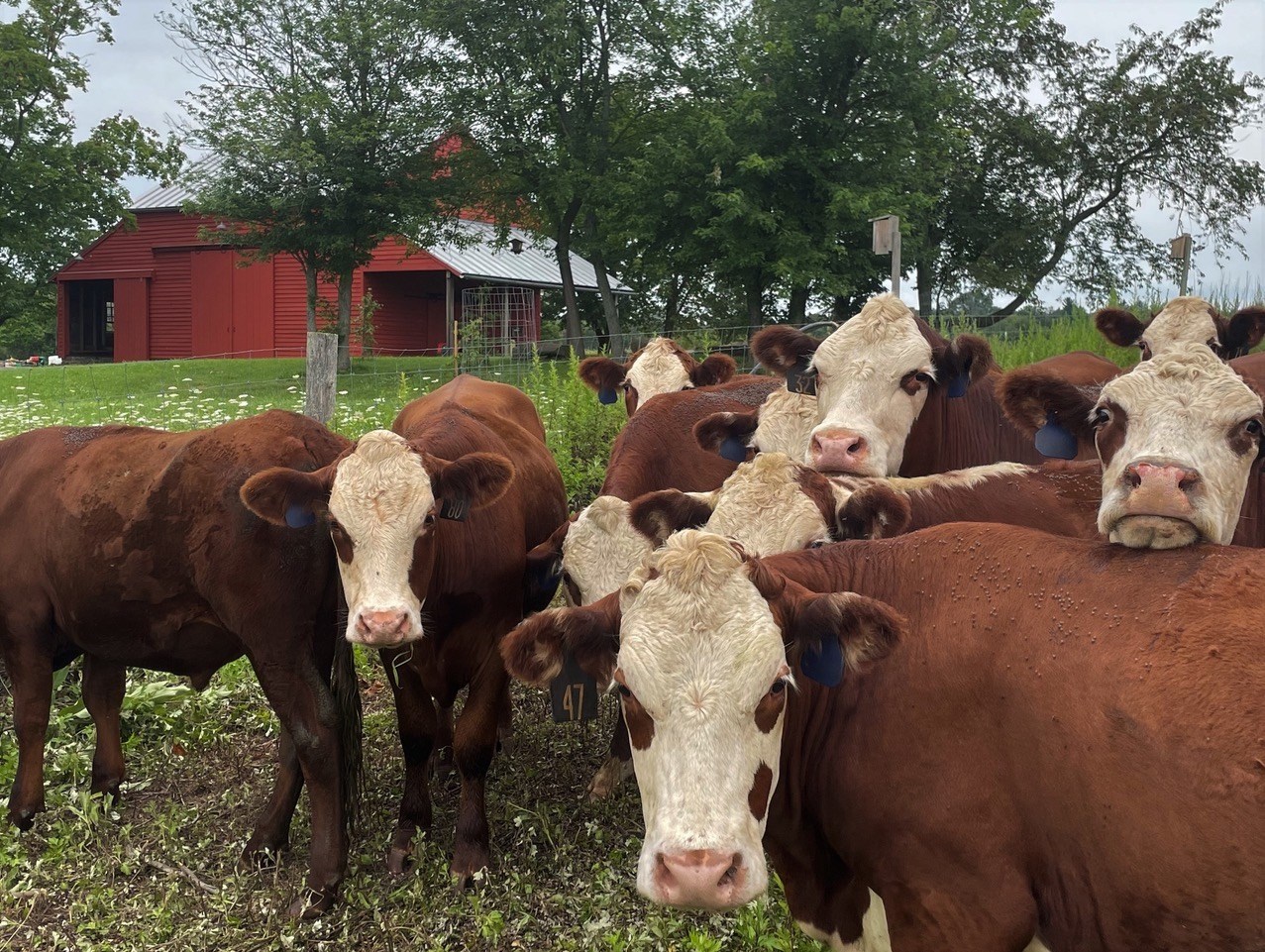D&R Greenway and Soil Carbon Partners [SCP] announce the August 3rd arrival of fifteen cows to St. Michaels Farm Preserve in Hopewell. They already are grazing on a diverse mix of forage grasses and legumes planted by SCP.
Beginning in early spring 2021, SCP, led by managing member Ed Huling, applied a special mix of organic materials to 50 acres of farm fields on the land trust’s St. Michaels Farm. Based on 20 years of SCP’s research and refinement, this soil mix contains abundant minerals, organic matter and beneficial soil organisms. The newly enriched soil is the heart of the matter in this ground-breaking Climate Project.
During the first two months following the application of soil enrichment materials, the dry weight of newly planted forage grasses was already 300% greater compared to control plots. Growing more food on less land is essential for combatting climate change, because if food production per acre could be significantly increased, we would no longer need to cut down forests to feed a growing population. Recent Princeton research proves that forests powerfully cool the planet. Research authors Sara Cerasoli and Amilcare Porporato, recently published their breakthrough research on the cooling effect of forests in the Proceedings of the National Academy of Sciences.
The third milestone in SCP’s three-part climate mitigation program, along with soil restoration and higher forage crop productivity, was bringing fifteen Hereford and Devon cattle to graze on the fields. Over the course of history, cows, buffalo, elk, and other grazing animals eating grass on pastures sequestered hundreds of billions of tons of atmospheric carbon in soil around the world. By doing so, these grazing animals have been key players in keeping the earth cool for tens of thousands of years. They are just as important now to keeping the grass trimmed, and actively drawing down CO2 from the atmosphere and sequestering it in soil.
Knee-deep in nutrient-rich grasses, the herd already surpasses the well known description of contented cows. In addition, a unique feature of their fenced pasture is a movable “cow umbrella,” which shades the cattle from hot summer sun. Above their heads, white-breasted tree swallows and ruddy-breasted barn swallows waltz and even sing in welcome. A mockingbird flashes by in unaccustomed silence. As always, at St. Michaels Farm Preserve, calm is the norm. It is increased by the response of the Herefords and Devons to their abundant array of grasses. Gazing across the farm, visitors who walk the trails will notice differing heights of plants that indicate varying fertility formulations and application rates.
Huling said he is thankful to D&R Greenway and the community, “We are very grateful for D&R Greenway Land Trust’s ongoing and active support of this Climate Project through use of their fields and managing their land to accommodate our farming activities. We also appreciate the warm welcome, curiosity and understanding shown to us by community members.” Through local connections, these first cows to arrive to the preserve came from Charlie and Lucia Huebner’s nearby Beechtree farm in Hopewell, thus providing for this key phase of research.
D&R Greenway, a nonprofit organization that counts on donations from individuals to care for this land, permanently preserved the 415 acre farm in 2010, saving it from development into 1,050 houses and a shopping center. The land trust maintains bird boxes and habitat on the farm, and ensures the continuation of agriculture. Six miles of trails through woods and along farm roads are provided to the public on this popular preserve. St. Michaels Farm Preserve visitors and hikers are urged to stay upon designated trails, and keep away from the animals for your safety and their continued tranquility. Fences are electric, and people should maintain 10 feet distance and keep children from approaching them. Dogs should be kept on a leash, as is the preserve’s rule, to keep them from approaching and barking at the farm animals and fellow walkers.
D&R Greenway CEO & President, Linda Mead, remembers: “Eleven years ago, when D&R Greenway opened the St. Michaels Farm Preserve, the cattle of Jon and Robin McConaughy’s Double Brook Farm were pastured upon these same fields where the new Herefords and Devons graze today. We have missed seeing cows on the fields since they were moved away these past 5 years. You could say we’ve been waiting ‘til the cows come home.’”
Three independent advisors from leading universities are measuring results of this scientific project. In weeks to come, they will monitor the cattle’s individual weight gain, expected to surpass that of cows grazing upon conventional grasses today. Throughout the Climate Project, SCP will continue to manage grazing patterns at St. Michaels Farm, to optimize grasses’ ongoing sequestration of carbon. The ability to sequester carbon in farm and forest soils is increasingly recognized as a key strategy for helping slow climate change. Extreme weather events this summer occurring all over the world have been attributed to climate change. D&R Greenway and Soil Carbon Partners believe that techniques like this could be a part of the solution.
Submitted by D&R Greenway Land Trust https://drgreenway.org/




